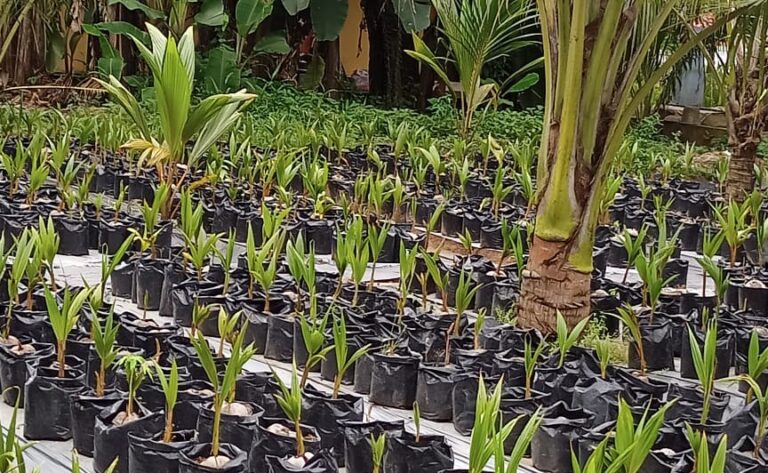Palms for
Generations
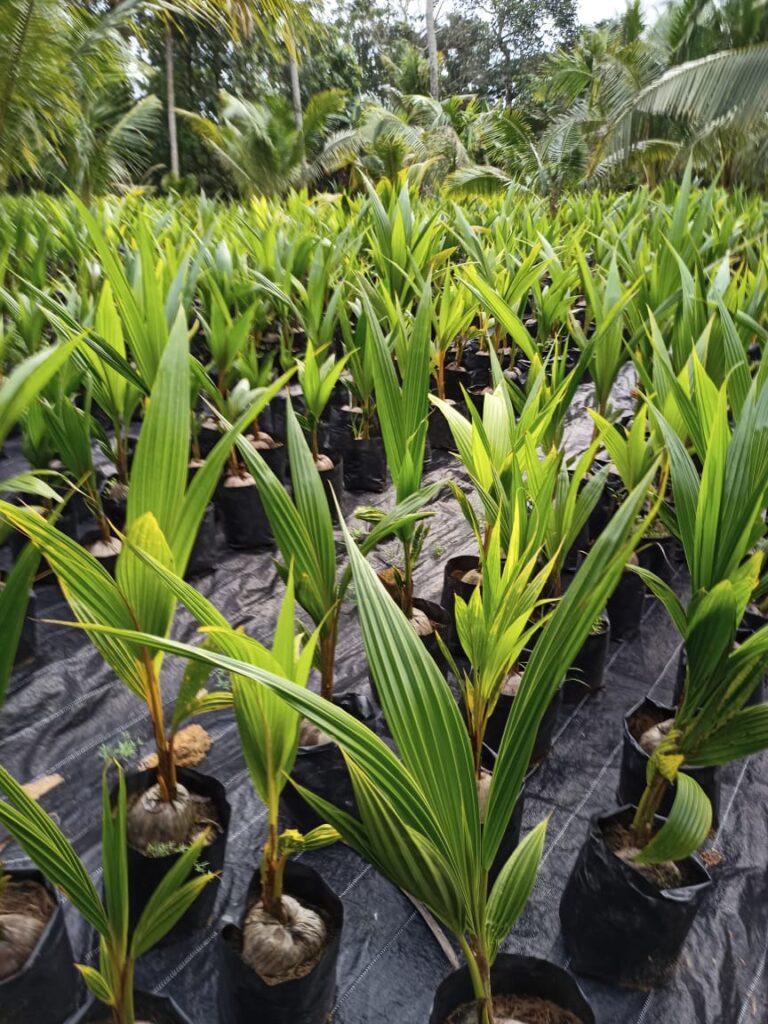
About Us
Jay Hind Farm
Jay Hind Farm produces coconut seedlings by obtaining mother seeds from reputed and recognised coconut farms in South India. We do not purchase and supply saplings from other nurseries. By producing seedlings in our own farm, we ensure the quality and reliability of the different varieties of coconut saplings that we supply.
Seedling Varieties in our farm
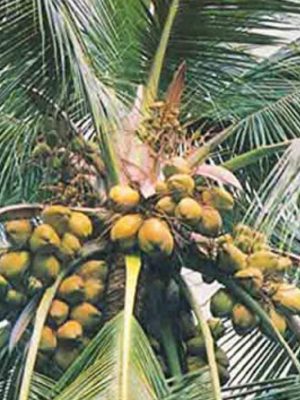
West Coast Tall
The tall varieties generally grown along the west coast are called West Coast Tall. Popularly known as the Common Tall Variety, the West Coast Tall coconut can grow in almost every kind of soil. They thrive well in littoral sand other kinds of soil that can tolerate moisture. The palm takes around six to seven years for bearing fruits. It normally yields eighty to ninety nuts annually. About 95 % of the coconut trees in Kerala belongs to this category.
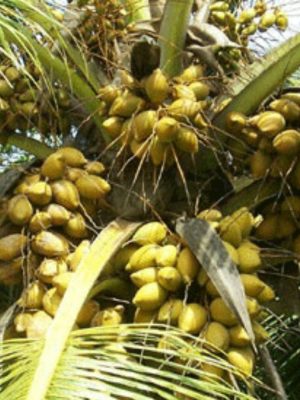
Kuttiyadi
Among tall varieties, Kuttiadi is the first choice for farmers in Kerala. Kuttiadi is an ecotype of the West Coast Tall (WCT). It has a life span of 100-150 years and grows to a height of over 30 meters. It can bears fruits in 5 years. Kuttiyadi is considered superior to other coconut varieties in terms of the yield (over 150 nuts per year), the taste of its water and flesh, size of the nuts, the high oil yield (70%) and the aroma of oil.
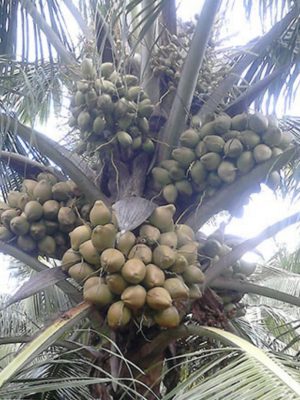
Dee Jay
Deejay is a hybrid variety involving WCT and COD developed several decades back. There are several farms in Tamil Nadu with this variety. It is a semi tall variety. The coconuts are good for tender coconuts as well as copra. The variety flowers in 3 years after planting and yields almost three times the number of nuts per year compared to ordinary tall varieties. The annual yield could be around 200 nuts. The palm yields big nuts and the oil content is high.

Chowghat Orange Dwarf
Known in Kerala as ‘Chenthangu,’ the trees are widely cultivated in Kerala, Tamil Nadu and Karnataka. COD can produce fruits in 3-4 years after planting and produces on an average 60-65 nuts per tree annually. The fruits are usually orange in colour and sometimes yellow and households in Kerala plant this variety as ornamental plant. COD was released by CPCRI in 1991 for large scale cultivation as tender nut variety
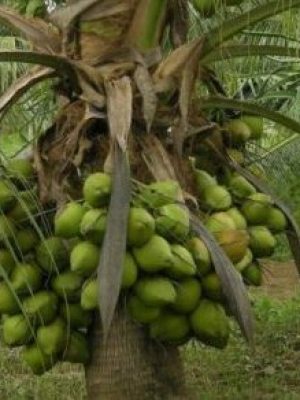
Chowghat Green Dwarf
Chowghat Green Dwarf is known as ‘Pathinettampatta’ because the inflorescence emerges from the 18th leaf axil. CGD is one of the famous dwarf varieties of coconut in India, suitable for cultivation in southern states like Tamil Nadu, Kerala, and Karnataka. It takes only 3-4 years to produce fruits. The yield varies in different places and the palm produces 30 to 100 nuts per year. The nuts are used as tender coconut. The fruits are small and the copra content is low.
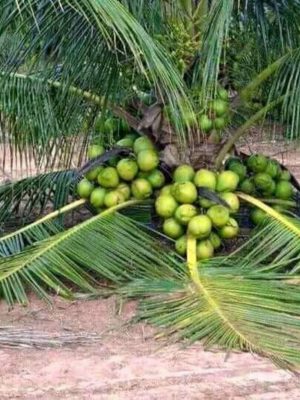
Gangabondam Green Dwarf
Gangabondam Green Dwarf is a semi-tall variety, cultivated extensively in east Godhavari district of Andhra Pradesh. The variety provides good tender nuts. The palm has a thin stem. GBGD flowers in 4-5 years after planting. The average yield is in the range of 60-70 nuts per annum. The nuts are heavy (about 800g) with high nut weight (about 500g).
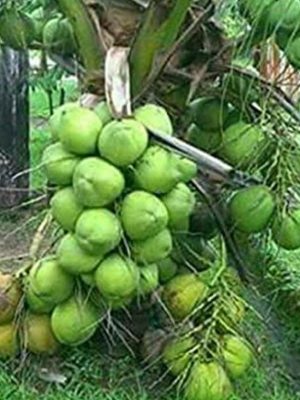
Malayan Green Dwarf
This is a preferred variety for tender coconut water and it produces green coconuts and the coconuts typically contain more water and less meat. The palm grows to a height of 10 meters and has generally a thin stem, about 20 to 25 cm in diameter. MGD starts flowering in 3 years after planting. The nuts are bigger, rounder and with a higher kernel content. It may produce 30-80 fruits per palm per year
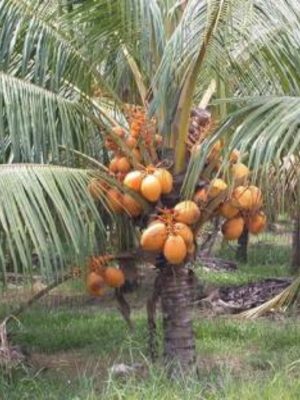
Malayan Yellow Dwarf
The Malayan Yellow Dwarf is probably the most widely diffused Dwarf coconuts in the world. MYD grows to a height of 10-20 meters. It starts flowering in 3 years and produces about 80-100 fruits per year
Coconut Care Tips
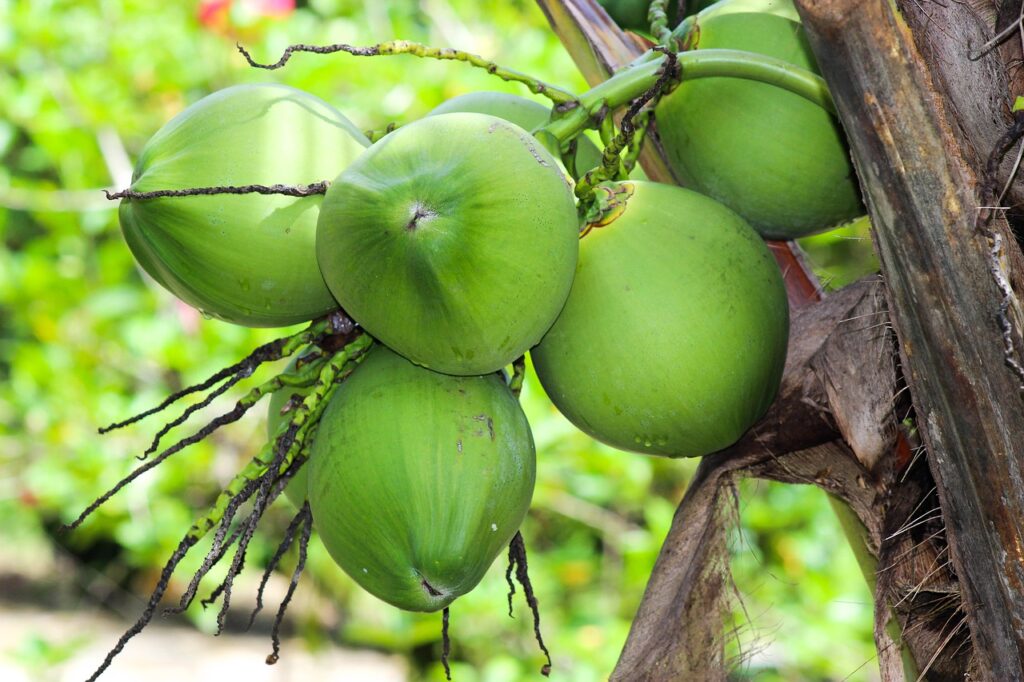
Learn about the most important coconut care tips that will help you to maximize the yield and minimize the diseases in you coconut trees.
Learn best practices in coconut cultivation. The topics discussed include: Planting Material, Site Selection, Preparation of Land, Spacing and Systems of Planting, Time of Planting, Planting, Care of young Palms, Manuring, Irrigation, Inter-crop cultivation, Pests in coconut and pest control ,Diseases of coconuts and disease control, post-harvest management and organic farming.
Frequently Asked questions

Get answers to the frequently asked questions relating to coconut farming.

